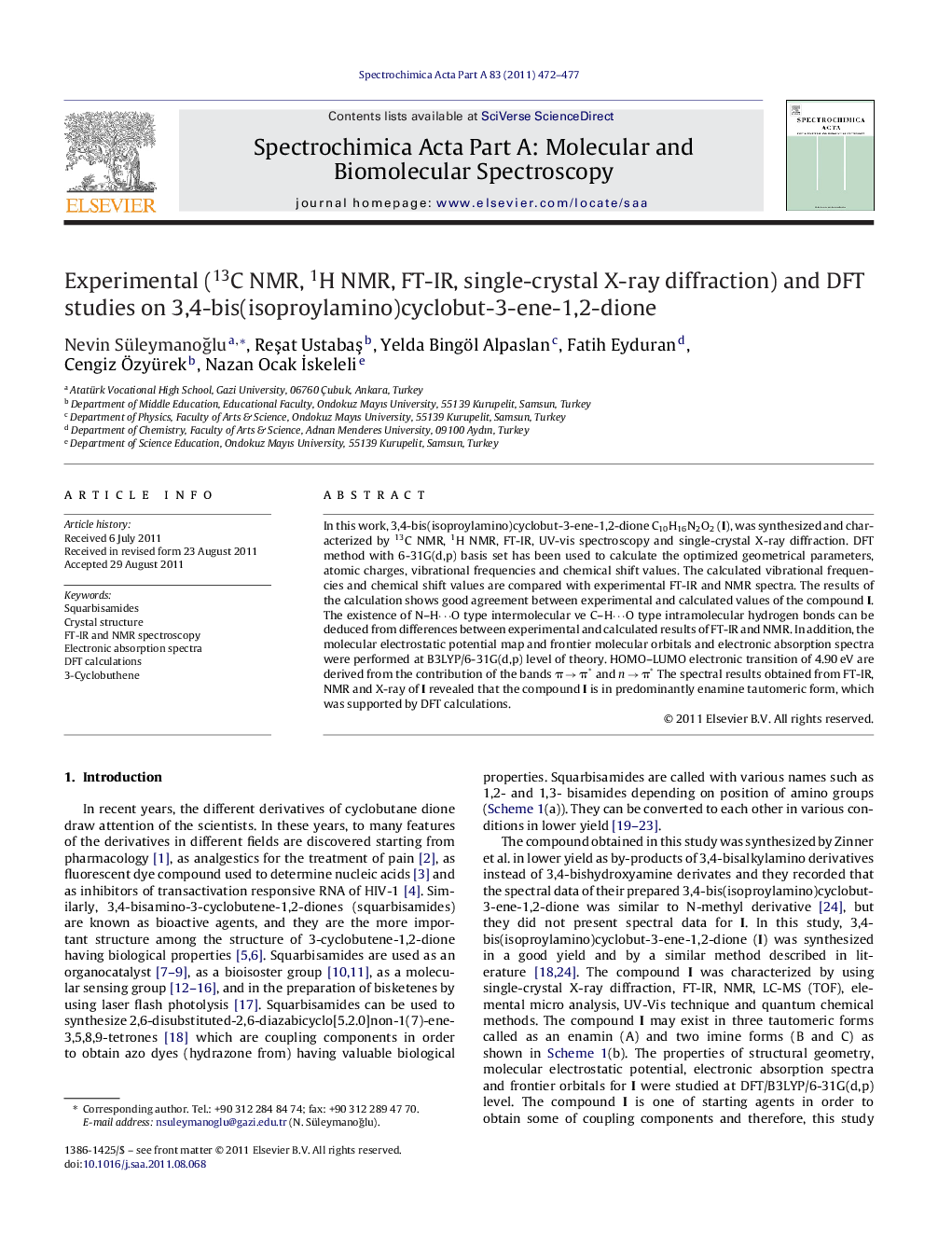| Article ID | Journal | Published Year | Pages | File Type |
|---|---|---|---|---|
| 1235209 | Spectrochimica Acta Part A: Molecular and Biomolecular Spectroscopy | 2011 | 6 Pages |
In this work, 3,4-bis(isoproylamino)cyclobut-3-ene-1,2-dione C10H16N2O2 (I), was synthesized and characterized by 13C NMR, 1H NMR, FT-IR, UV-vis spectroscopy and single-crystal X-ray diffraction. DFT method with 6-31G(d,p) basis set has been used to calculate the optimized geometrical parameters, atomic charges, vibrational frequencies and chemical shift values. The calculated vibrational frequencies and chemical shift values are compared with experimental FT-IR and NMR spectra. The results of the calculation shows good agreement between experimental and calculated values of the compound I. The existence of N–H⋯O type intermolecular ve C–H⋯O type intramolecular hydrogen bonds can be deduced from differences between experimental and calculated results of FT-IR and NMR. In addition, the molecular electrostatic potential map and frontier molecular orbitals and electronic absorption spectra were performed at B3LYP/6-31G(d,p) level of theory. HOMO–LUMO electronic transition of 4.90 eV are derived from the contribution of the bands π → π* and n → π* The spectral results obtained from FT-IR, NMR and X-ray of I revealed that the compound I is in predominantly enamine tautomeric form, which was supported by DFT calculations.
Graphical abstract.Figure optionsDownload full-size imageDownload as PowerPoint slideHighlights► The compound 3,4-bis(isoproylamino)cyclobut-3-ene-1,2-dione synthesized. ► The compound was characterized by NMR, FT-IR, UV-vis and X-ray crystallography. ► The theoretical calculations were performed by DFT method. ► The theoretical results were compared experimental results. ► The compound exist in predominantly enamine tautomeric form.
